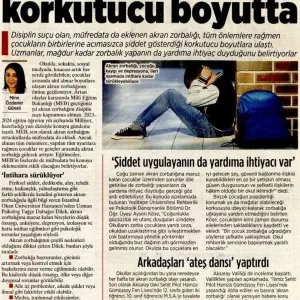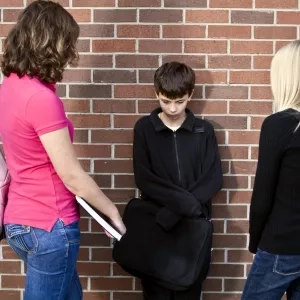Bullying Kids Need Help Too!

Bullying Kids Need Help Too!
Giving information about peer bullying, Associate Prof. Dr. Ayşen Köse said: "Bullying children are actually mostly in feelings of weakness and shame. When the response of schools to bullies is methods such as punishment and suspension from school, which are aimed at suppressing rather than healing, the bottom of the iceberg is ignored."
Associate Prof. Dr. Ayşen Köse highlighted the importance of implementing alternative approaches like "positive discipline, restorative justice, and trauma-informed school practices" to achieve "Zero Bullying" in schools.
In addition to physical violence, bullying can be seen in many different ways, such as gossiping, name-calling, teasing and threatening, isolating, damaging belongings, and showing irritating looks and behaviors. It can have consequences such as anxiety and depression, withdrawal from school, and can even lead the bullied child to suicide.
Yeditepe University Faculty of Education, Department of Guidance and Psychological Counseling's Associate Prof. Dr. Ayşen Köse gave information about peer bullying, which has been on families' agenda more recently.
“Who Are These “Bullies”?”
Asst. Prof. Dr. Köse, who states that it's impossible to define a single profile for bullying children, explains, "Research on bullying suggests that bullying children often come from unsupportive, chaotic family environments and/or have traumatic life experiences. For example, children who are abused often adopt the characteristics of their abuser, making it highly likely that these children will become bullies at school. We see that children who bully others have emotional-social problems and try to gain a sense of power, attention, and control by tormenting a child they perceive as weaker. Bullying behaviors essentially express unmet needs in a child.
Köse reminds us that children who bully are prone to violent, sudden, and unpredictable actions, stating, "They are often filled with feelings of weakness and shame. The underlying issues are missed when schools respond to bullying children with penal measures like expulsion. Addressing the behavior of these children requires a paradigm shift. The best approach in school environments is to provide these children with at least one adult they can form a secure attachment to, fostering an atmosphere of trust and compassionate relationships."
"They Frighten Other Children Too”
Associate Prof. Dr. Ayşen Köse points out that many children remain bystanders to preserve their popularity, aligning with bullies. At the same time, some stay passive due to fear of becoming victims themselves and not helping the bullied individuals. Köse notes, "Another group includes students who are both bullies and victims. This bully/victim group tends to score the lowest in wellbeing measures and need the most support." Köse also noted that research highlights that bullying significantly decreases in schools with a trust-based, supportive, fair, consistent, and democratic climate, encouraging witnesses to stand up against bullying. Köse continued her words as follows: "Authoritarian approaches lead to a culture where bullying is normalized, as students hide the bullying they face or respond by being passive observers."
"Restorative Justice for Zero Bullying"
Noting that children sometimes hide the situation from their families because they think that being bullied is their fault, Associate Prof. Dr. Ayşen Köse gave the following information about what can be done against peer bullying:
"If a child tells you they are being bullied, listening to them calmly is the first and most correct approach. You must praise the child for talking to you about this issue, approach them with compassion, reassure them that you won't leave them alone, and think together about what to do about it. As you elicit details from your child or student, you should remember that they may withhold some information out of fear of escalation. It is difficult to suggest a one-size-fits-all approach to handling bullying; the severity of the incidents will dictate the strategies you should use. The first step is to contact the school guidance service and discuss the situation with the school counselor. In the case of cyberbullying, it is necessary to take screenshots and immediately block the bullying peer from social media. It is often not a useful strategy for the family of the bullied child to contact the bully's family directly; parents should contact the bully through the school. Alternative approaches such as positive discipline, restorative justice, and trauma-sensitive school should become school policy to achieve 'zero bullying' in schools."


